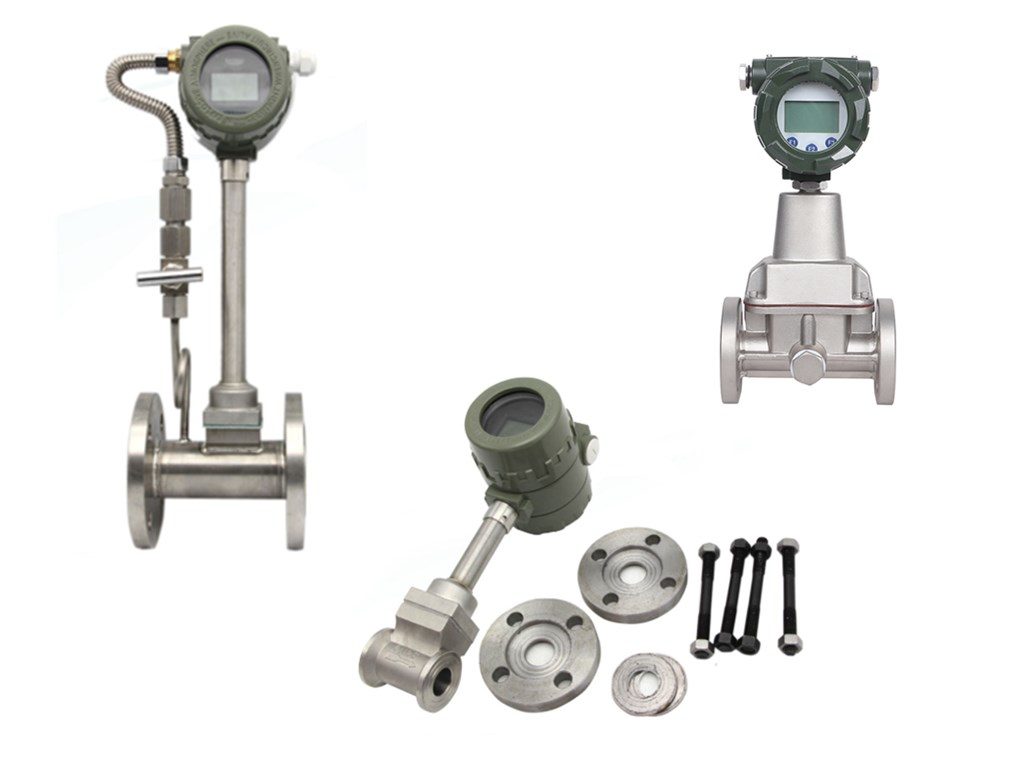Best Technology Guide to Vortex Flow Meters.
Vortex flow meters are suitable for measuring steam as well as a variety of liquids and gases. As fluid moves across a vortex meter shedder bar, vortices form. The frequency of the vortices shedding is proportional to the fluid velocity.
Even for the steam flow rate, Vortex flow meters are the perfect choice. Pressure and Temperature compensation ensure measurement accuracy. When measure steam or gas flow in pipes with variable operating pressure and temperature.
Applications in the chemicals and petrochemicals industries. For example, in power generation and heat-supply systems. Involve widely differing fluids: saturated steam, superheated steam, compressed air. Nitrogen, liquefied gases, flue gases, carbon dioxide, fully demineralized water. Solvents, heat-transfer oils, boiler feedwater, condensate, etc.
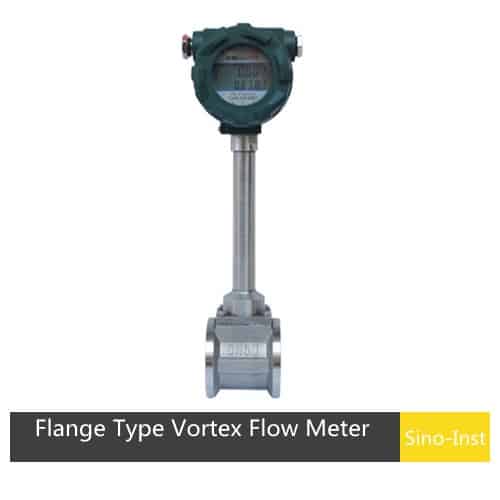
SI-3301 Gas Vortex Flow Meter
SI-3301 digital gas vortex flow meter is a flow meter operating with Karman Vortex principle for flow rate of gases (air, oxygen, nitrogen, coal gas, natural gas, chemical gas, etc.). It could be used in automatic control system as flow transmitter.
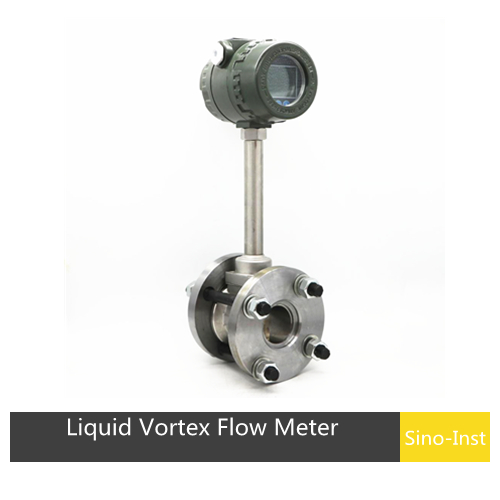
SI-3302 Liquid Vortex Flow Meter
SI-3302 Liquid Vortex Flow Meter is a flow meter operating with Karman Vortex principle for flow rate of liquids (water, high temperature water, oil, beverage, chemical liquids, etc.). It could be used in automatic control system as flow transmitter. SI-3302 liquid flow meter is also with unique sensor encapsulation and protection technology to ensure service life of the sensor.
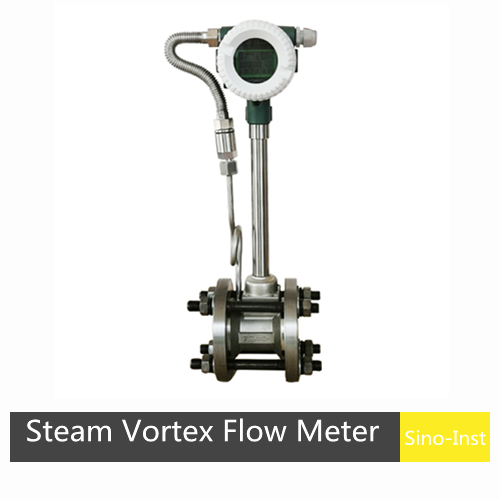
SI-3303 Steam Vortex Flow Meter
SI-3303 digital steam vortex flow meter is a flow meter operating with Karman Vortex principle for flow rate of steams (saturated steam, superheated steam, etc.). It could be used in automatic control system as flow transmitter. SI-3303 steam flow meter is also with unique sensor encapsulation and protection technology to ensure service life of the sensor.
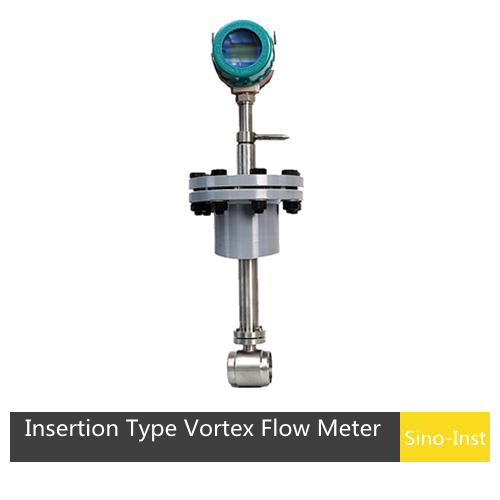
SI-3304 Insertion Type Vortex Flow Meter
SI-3304 Insertion Type Vortex Flow Meter is designed for large pipeline size over 10 inches, users can install and removal the vortex sensor without closing down the whole running system. Customers can get volumetric or mass flow of gas, air or steam through our powerful vortex flow meter
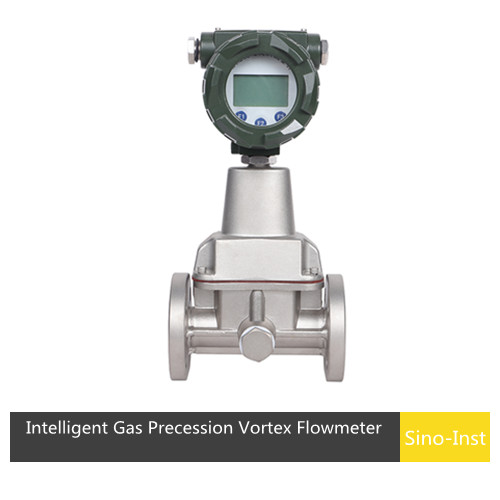
SI-3305 Intelligent Gas Precession Vortex Flowmeter
SI-3305 Intelligent Gas Precession Vortex Flowmeter is a new type of gas flow meter. It has the function of measuring flow, temperature, and pressure; it also can compensate temperature, pressure and compressible factor automatically. It is an ideal instrument of gas measurement, which is used for petroleum, chemical industrial, electricity, metallurgy, and so on.
What is a Vortex Flow Meter?
Vortex flowmeters are also called vortex shedding flowmeters or Karman vortex flowmeters. Vortex flowmeter is a volume flowmeter that measures the volume flow, standard volume flow or mass flow of gas, steam or liquid. Mainly used to measure the flow of medium fluid in industrial pipelines, such as gas, liquid, steam and other media.
A vortex flow meter is suited for flow measurements where the introduction of moving parts presents problems. They are available in industrial grade, brass or all plastic construction. Sensitivity to variations in the process conditions are low and with no moving parts. And have relatively low wear compared to other types of flow meters.
Vortex flow meters operate under the vortex shedding principle. An oscillating vortexes occur when a fluid such as water flow past a bluff (as opposed to streamlined) body. The frequency that the vortexes are shed depend on the size and shape of the body. It is ideal for applications where low maintenance costs are important. Industrial size vortex meters are custom built and require appropriate sizing for specific applications.
Features
- Universal flow meter for liquids, gases and steam measurement.
- Integrated pressure and temperature compensation, integrated energy calculator.
- Various designs: From version with reduced nominal diameter to dual device with two flow converters
- High long-term stability: no zero-point drift and lifetime K-factor
- Large turndown of typically 10:1 to 30:1 for gas/steam, or up to 40:1 for liquids
- Wide temperature range: –200 to +400 °C (+450 °C on demand)
Vortex-Shedding History
Vortex flow meters measure fluid velocity using a principle of operation referred to as the von Kármán effect. When flow passes by a bluff body, a repeating pattern of swirling vortices is generated.
Theodore von Karman, a Hungarian-American physicist, was the first to describe the effect. Where a non-streamlined object (also called a bluff body) placed in the path of a fast-flowing stream. Causes the fluid to alternately separate from the object on its two downstream sides. And, as the boundary layer becomes detached and curls back on itself, forming vortices (also called whirlpools or eddies). He also noted that the distance between the vortices was constant and depended solely on the size of the rock that formed it.
On the side of the bluff body where the vortex is being formed, the fluid velocity is higher and the pressure is lower. As the vortex moves downstream, it grows in strength and size, and eventually detaches or sheds itself. This is followed by a vortex’s being formed on the other side of the bluff body. The alternating vortices are spaced at equal distances.
Common Vortex Shedding Phenomenon
The vortex-shedding phenomenon can be observed as wind is shed from a flagpole: it is what causes the regular rippling in a flag. Vortices are also shed from bridge piers, pilings, offshore drilling platform supports, and tall buildings. The forces caused by the vortex-shedding phenomenon must be taken into account when designing these structures.
Vortex Meter Design
Vortex flowmeters are usually made of 316 stainless steel or Hastelloy® and include a bluff body. Vortex flowmeters are composed of vortex sensor components and transmitter electronics. The vortex flowmeter’s transmitter can be installed remotely. They are typically available in flange sizes from 1/2 in. to 12 in. The installed cost of vortex meters is competitive with that of orifice meters in sizes under six inches. Wafer body meters (flangeless) have the lowest cost. While flanged meters are preferred if the process fluid is hazardous or is at a high temperature.
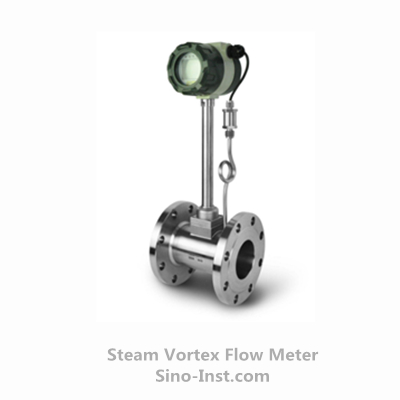
There are square, rectangular, t-shaped, and trapezoidal shapes for bluff body. These shapes and dimensions have been experimented with to achieve the desired characteristics. Testing has shown that linearity, low Reynolds number limitation, and sensitivity to velocity profile distortion vary only slightly with bluff body shape. In size, the bluff body must have a width that is a large enough fraction of the pipe diameter that the entire flow participates in the shedding. Second, the bluff body must have protruding edges on the upstream face to fix the lines of flow separation, regardless of the flow rate. Third, the bluff body length in the direction of the flow must be a certain multiple of the bluff body width.
Most vortex meters uses piezoelectric or capacitance-type sensors. These sensors can detect the pressure oscillation around the bluff body. These detectors respond to the pressure oscillation with a low voltage output signal. Such sensors are modular, inexpensive, easily replaced. And can operate over a wide range of temperature ranges–from cryogenic liquids to superheated steam. Sensors can be located inside the meter body or outside. Wetted sensors are stressed directly by the vortex pressure fluctuations. And are enclosed in hardened cases to withstand corrosion and erosion effects.
External sensors sense the vortex shedding indirectly through the force exerted on the shedder bar. External sensors are preferred on highly erosive/corrosive applications to reduce maintenance costs. While internal sensors provide better rangeability (better low flow sensitivity). They are also less sensitive to pipe vibrations. The electronics housing usually is rated explosion-proof and weatherproof. And contains the electronic transmitter module, termination connections. And optionally a flow-rate indicator and/or totalizer
Accuracy & Rangeability
The Reynolds number drops as viscosity rises. So vortex flowmeter rangeability suffers as the viscosity rises. The greatest viscosity limit, as a function of allowable accuracy and rangeability, is between 8 and 30 centipoises. One can expect a better than 20:1 rangeability for gas and steam service. And over 10:1 for low-viscosity liquid applications if the vortex meter has been sized properly for the application.
The inaccuracy of most vortex meters is 0.5-1% of rate for Reynolds numbers over 30,000. As the Reynolds number drops, metering error increases. At Reynolds numbers less than 10,000, error can reach 10% of actual flow.
While most flowmeters continue to give some indication at near zero flows, the vortex meter is provided with a cut-off point. Below this level, the meter output is automatically clamped at zero (4 mA for analog transmitters). This cut-off point corresponds to a Reynolds number at or below 10,000. If the minimum flow that one needs to measure is at least twice the cut-off flow, this does not pose a problem. On the other hand, it can still be a drawback if low flowrate information is desired during start-up, shutdown, or other upset conditions
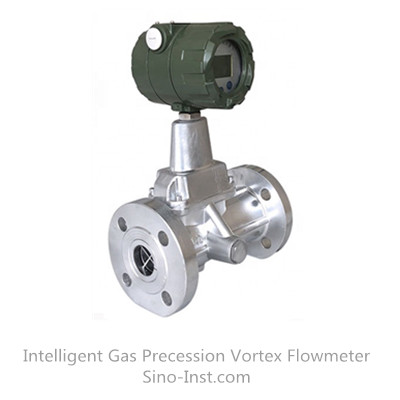
How does a vortex flow meter work?
Vortex meters use a shedder bar, to generate the phenomenon known as Kármán vortex street. In which vortices begin to form and oscillate. Using a variety of sensor technologies, the natural frequency of these oscillating vortices is converted into a digital signal. Then processed through the meter’s electronics to calculate flow.
Vortex flow meter working principle
A vortex generator (blocking fluid) is provided in the fluid. And regular vortices are alternately generated from both sides of the vortex generator. This vortex is called a Kaman vortex street. As shown, the vortex rows are arranged asymmetrically downstream of the vortex generator.
Suppose the frequency of vortex occurrence is f.
The average velocity of the incoming flow of the measured medium is U.
The width of the vortex generator front face is d.
And the diameter of the surface body is D.
According to the principle of Kaman vortex street, there is the following relationship:
f = SrU1 / d = SrU / md (1)
where
U1–average flow velocity on both sides of the vortex generator, m / s;
Sr–Strauhal number;
m–the ratio of the arcuate area on both sides of the vortex generator to the cross-sectional area of the pipe.
TTT
The volume flow qv in the pipeline is:
qv = πD2U / 4 = πD2mdf / 4Sr (2)
K = f / qv = [πD2md / 4Sr] -1 (3)
In the formula, K is the meter coefficient of the flow meter, and the number of pulses / m3 (P / m3).
K is related not only to the geometry of the vortex generator and the pipeline, but also to the Strouhal number. The Strouhal number is a dimensionless parameter, which is related to the shape of the vortex generator and the Reynolds number. The figure shows the relationship between the Strawhall number of the cylindrical vortex generator and the Reynolds number of the pipeline.
It can be seen from the figure that in the range of ReD = 2 × 104 ~ 7 × 106, Sr can be regarded as a constant, which is the normal working range of the meter. When measuring the gas flow, the VSF flow calculation formula is
TTT
Where qVn, qV–respectively are the volume flow under standard conditions (0oC or 20oC, 101.325kPa) and working conditions, m3 / h;
Pn, P–absolute pressure under standard conditions and working conditions, Pa;
Tn, T-the thermodynamic temperature under standard conditions and working conditions, K;
Zn, Z–respectively the gas compression coefficients under standard conditions and working conditions.
It can be seen from the above formula. The pulse frequency signal output by VSF is not affected by the fluid physical properties and composition changes. The meter coefficient is only related to the shape and size of the vortex generator and the pipeline within a certain Reynolds number range.
Yet, as a flow meter needs to detect the mass flow in the material balance and energy measurement. The output signal of the flow meter should monitor the volume flow and fluid density at the same time. The fluid properties and components have a direct impact on the flow measurement.
What is K factor in vortex flow meter?
How is the meter coefficient K of the vortex flowmeter obtained?
The meter coefficient K value of the vortex flowmeter: it has been debugged and tested before leaving the factory.
The meter constant K of each flowmeter has been indicated on the nameplate and the factory certificate.
Its physical meaning is in the calibration state ( P = 101.3kPa, t = 20 ° C)
For each liter volume flow through the flowmeter, the number of pulses output by the flowmeter, the unit is 1 / L.
Due to the change in the temperature of the measuring medium, the geometric dimensions of the measuring pipe and the vortex generator have changed due to thermal expansion and contraction. The flow meter constant needs to be corrected.
The expression of the correction coefficient KT is:
KT = 1-4.8 × 10-5 × t- In formula 20: t──Measure the temperature of the medium, ° C.
1: Calculate the volume flow under the actual pipeline working state according to the flow range set by the process:
The flow rate set by the process can be the mass flow rate (kg / h), the volume flow rate in the working state (m3 / h) or the volume flow rate in the standard state (N m3 / h).
The mass flow rate or the volume flow rate in the standard state is converted into.
The method of volume flow in working state is as follows:
a. The maximum flow rate (maximum range) Gmax (kg / h) of the mass flow rate is converted into the volume flow rate Qmax (m3 / h) in the working state, and the calculation formula is:
Qmax Gmax × ─ m3 / h)
In the formula: ρ ──The density of the medium kg / m3 under the working condition of the instrument
b. The maximum flow rate (upper range) Q0max (Nm3 / h) of the gas standard state is converted into the volume flow rate Qmax (m3 / h) in the working state, and the calculation formula is:
Qmax Q0max × ───── × ───── m3 / h)
In the formula: P ─ the gauge pressure of the gas under the working condition of the instrument (MPa);
T ──The temperature of the gas under the working condition of the instrument (℃).
2: Calculate the maximum frequency fmax of the vortex street according to the maximum volume flow Qmax (m3 / h) in the working state:
fmax ─── × Qmax × K × KT Hz)
In the formula: K ── meter coefficient (1 / L), K value is indicated on the meter nameplate;
KT──Temperature correction factor.
For example, we know that the meter factor of a 10-inch vortex flowmeter is 1.2 pulses / liter. Using the above formula, we can calculate the meter coefficient of a 20-inch vortex flowmeter: 0.15 pulses / liter. Pulse / liter.
In this way, we can design and process any caliber vortex flowmeter according to the actual working conditions, and can calculate its theoretical instrument coefficient, which provides a theoretical reference for the calibration of the actual instrument coefficient.
Vortex flow meter installation
Vortex flowmeters can be widely used in large, medium and small pipes. Water supply and drainage, industrial cycle, sewage treatment, oil and chemical reagents. Compressed air, saturated and superheated steam, natural gas and various media flow measurement. And can be used as a flow transmitter in automated control systems. long lasting. Points to note when installing the vortex flowmeter:
1. Reasonably choose the place and environment where the vortex flowmeter is installed. While considering the convenience of installation and maintenance. Avoid strong power equipment, high-frequency equipment, strong power switch equipment. Avoid the effects of high temperature heat and radiation sources. Avoid strong vibration places and strong corrosive environments, etc.
2. There must be enough straight pipe sections upstream and downstream. If the sensor installation point of the vortex flowmeter is upstream of two 90 on the same plane. Elbows, then: upstream straight pipe section ≥25D, downstream straight pipe section ≥5D. If there are two 90s on different planes upstream of the sensor mounting point. Elbows, then: upstream straight pipe section ≥40D, downstream straight pipe section ≥5D. The regulating valve should be installed outside 5D downstream of the sensor. If it must be installed upstream of the sensor, the straight pipe section upstream of the sensor should not be less than 50D, and the downstream should be not less than 5D.
3. The piping upstream and downstream of the installation point should be concentric with the sensor. And the coaxial deviation should not be less than 0.5DN.
4. The pipeline adopts vibration reduction measures. Try to avoid installing the sensor on the pipe with strong vibration, especially the lateral vibration. If it is necessary to install it, vibration reduction measures must be taken. And pipe fastening devices should be installed at the 2D upstream and downstream of the sensor, respectively, and anti-vibration pads should be added.
5. Installation on horizontal pipes is a common installation method for flow sensors. When measuring the gas flow, if the measured gas contains a small amount of liquid, the sensor should be installed higher in the pipeline. When measuring liquid flow, if the measured liquid contains a small amount of gas, the sensor should be installed in the lower part of the pipeline.
6. Installation of sensors in vertical pipes. When the vortex flowmeter measures the gas flow, the sensor can be installed on a vertical pipe with unlimited flow direction. If the measured gas contains a small amount of liquid, the gas flow direction should be from bottom to top. When measuring liquid flow, the liquid flow should be from bottom to top: this will not add additional liquid weight to the probe.
7. The sensor is installed on the side of the horizontal pipeline. No matter what kind of fluid is measured, the sensor can be installed sideways on horizontal pipes, especially for measuring superheated steam, saturated steam and low-temperature liquids. If conditions permit the use of side loading, the temperature of the fluid will have less impact on the amplifier.
8. The sensor is flipped on a horizontal pipe. This installation method is generally not recommended. This installation method is not suitable for measuring general gases and superheated steam. Can be used to measure saturated steam, suitable for measuring high temperature liquids or situations where pipes need to be cleaned frequently.
9. Installation of sensors on insulated pipes. When measuring high-temperature steam, the insulation must not exceed a third of the height of the support.
10. Selection of pressure and temperature measurement points. According to the measurement needs, when the pressure and temperature need to be measured near the sensor. The pressure measurement point should be 3-5D downstream of the sensor. And the temperature measurement point should be 6-8D downstream of the sensor.
Vortex flow meter price
The price of vortex flowmeters is affected by the following measurement conditions:
1. Pipeline diameter
2. Accuracy requirements
3. Measure the pressure
4. Measure the temperature
5. Output signal
6. Whether explosion-proof
Key Elements to Consider before Choosing a Vortex Flow Meter
- What is the fluid being measured?
- Pressure Maxium and Minimum
- Flowrate Ranges
- Fluid Temperature
- Fluid Density Range
- Viscosity Range
- Pipe Size
- Maximum Acceptable Pressure Drop
- Pipe Schedule or Wall Thickness
- Pipe Material
- Nearest Upstream Obstruction
Vortex Flow Meters Applications
Vortex flowmeters are widely used in industrial circulation, sewage treatment, and oil flow measurement of large, medium and small pipelines. Vortex flowmeters are also frequently used for measurement in steam, saturated steam, and superheated steam. They can be specifically applied to Flow measurement in the following occasions
1. Flow measurement of steel plant and coke oven gas;
2. Measurement of air flow and secondary air volume of the boiler;
3. Flue gas flow measurement of the chimney;
4. Measurement of aeration flow in water treatment;
5. Gas flow measurement during the production process of cement plants, cigarette factories and glass factories;
6. Compressed air flow measurement in the compressor;
7, gas, liquefied gas, flare gas, hydrogen and other gas flow measurement
Summary: As can be seen from the above induction, vortex flowmeters are widely used in gas flow measurement. Generally, the first consideration when measuring gas is vortex flowmeters. When measuring liquids, the conductivity can be guaranteed Within the required range, the electromagnetic flowmeter is the most suitable solution. Or Turbine Flow meters.
-1.jpg)
